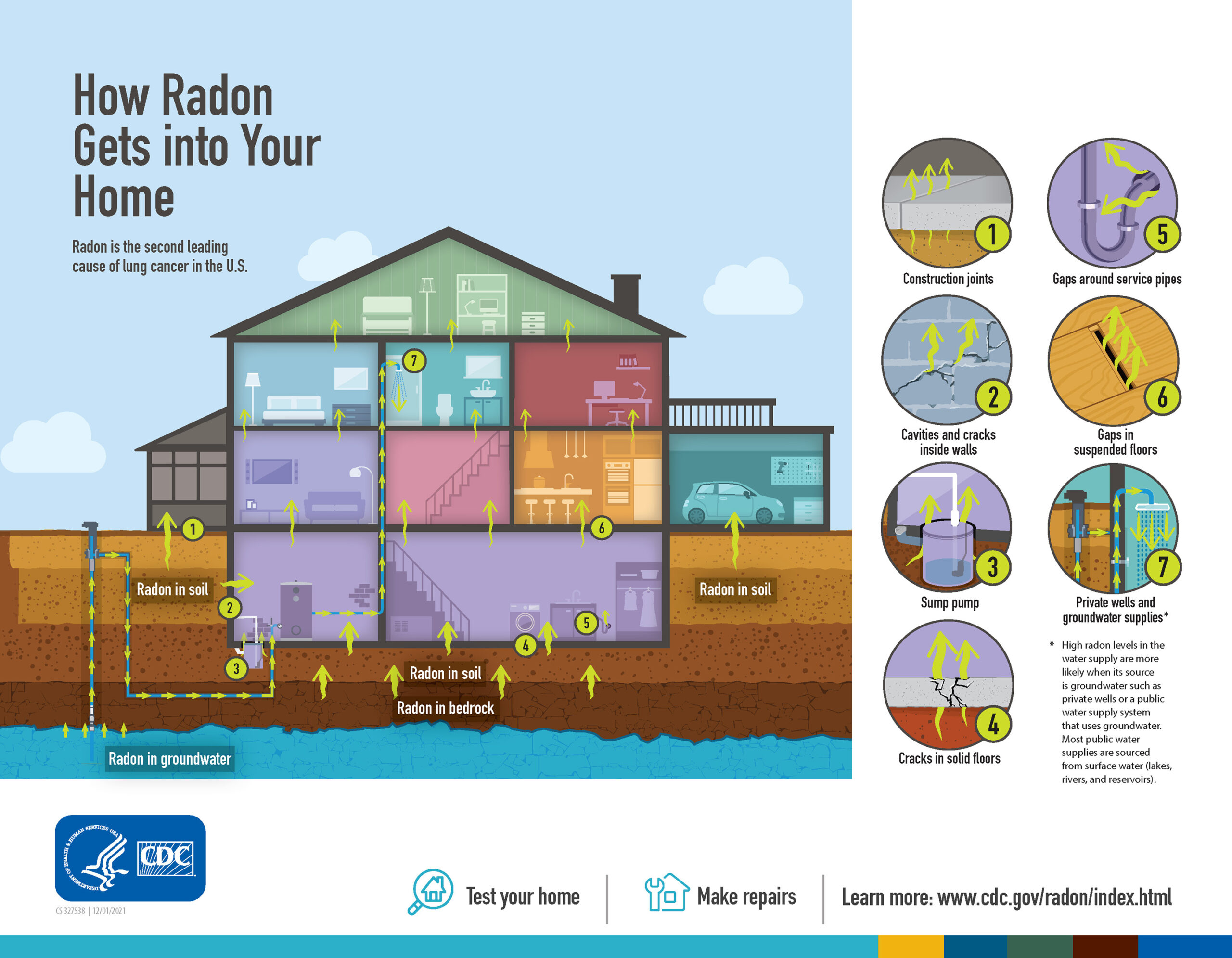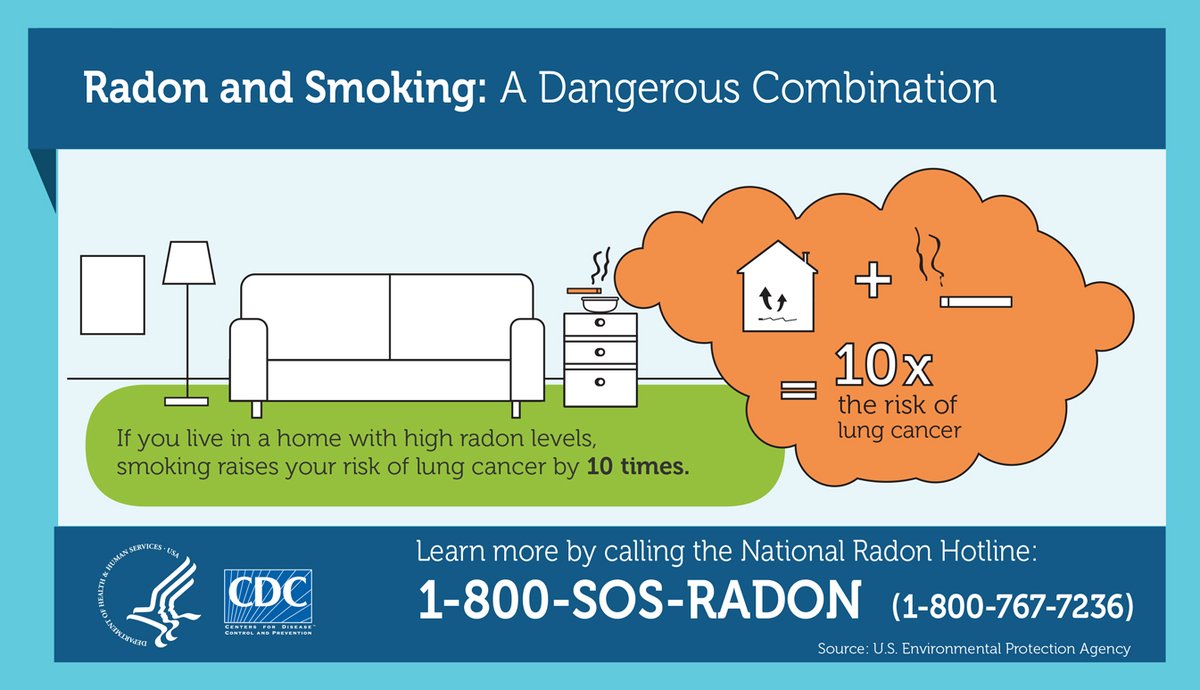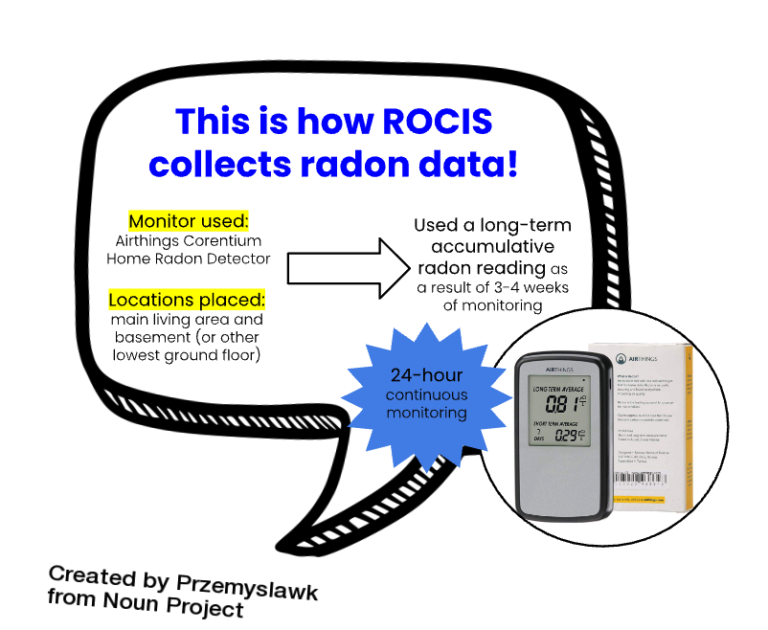Radon Reality Check: Testing Isn’t Enough, and Here’s Why
by Shaina Lacap
The ROCIS radon data shows that we should all be testing for radon, but testing isn’t enough.
While most Americans are aware of the risks associated with smoking, the health impacts of radon often fall under the radar. Radon is the second leading cause of lung cancer in the United States after smoking, contributing to an estimated 21,000 lung cancer deaths every year.
Radon is a naturally occurring radioactive gas that is released in groundwater, rocks, and soil. As a result, radon can sneak through the smallest gaps and holes in the foundation and accumulate from the ground up in homes, schools, and workplaces. People cannot see, taste, or smell this dangerous gas—radon testing is the only way of detecting it. As radon levels rise above zero, so does the risk of lung cancer for the people who are breathing it in.

Full description of the above graphic: How Radon Gets Into Your Home Webpage
The Environmental Protection Agency (EPA) suggests residents take action to reduce radon levels when their indoor radon levels reach 4 pCi/L (picocuries per liter). The World Health Organization (WHO) recommends a more protective action level of 2.7 pCi/L. The EPA notes that their organization “has been recommending for years that homeowners should consider fixing their homes when the radon level is between 2 and 4 pCi/L since there is still significant risk at levels below 4 pCi/L—in fact, there is no known ‘safe’ level of radon exposure.” According to the EPA, radon levels can be reduced in most homes to 2 pCi/L or below.

Full description of the above graphic: Radon and Smoking – A Dangerous Combination
ROCIS Data
Since 2015, ROCIS has collected air quality data from nearly 500 participants as part of the Low Cost Monitoring Project (LCMP).
More than 75% of these LCMP participants reside in Allegheny County, Pennsylvania, known as a radon “red” zone with the highest potential for elevated indoor radon levels.
During the summer of 2023, the ROCIS team initiated a comprehensive review of our radon data in collaboration with the Pitt Public Health Undergraduate Scholars Program (PHUSP).
Many of our LCMP participants come to us already aware of the dangers of radon, with an impressive 47% of our participants indicating their homes had previously been tested for radon and 18% indicating that they already had a radon mitigation system in place.
A number of participants who indicated previous testing also reported their home was last tested for radon ten years ago or longer. After completing the LCMP monitoring cycle, nearly a third of participants in Pennsylvania had basement radon levels above the EPA action level of 4 pCi/L.
We expected more homes that had previous radon testing to be below EPA recommended levels. Surprisingly, this was not the case. Why would just as many homes that were previously tested for radon have high readings as those that weren’t?
Radon Testing: Not Just One and Done
Of those who told us that they had tested previously, many stated that the test was completed for a real estate transaction, which typically entails a two- to three-day test. Within the LCMP, participants tracked radon levels for 3 to 4 weeks, which may offer a more accurate indication of indoor radon levels by comparison.
Radon levels are not constant and can fluctuate depending on the seasons, the amount of ventilation in a space, and the location being tested. If you’re using a shorter-term test, opening windows and using fans while testing can temporarily alter radon levels and potentially skew results. A longer monitoring period can more accurately reflect your home’s year-round average.

Radon mitigation is another important consideration. Whether due to a lack of awareness, interest, or resources, homeowners may not opt for radon mitigation. Also, mitigation systems—which may include sealing the foundation against radon infiltration and installing a pipe and fan to divert the gas away from the house—can sometimes fail or malfunction, which is why it is important to re-test a few months after installing one and every two years thereafter to ensure radon reduction has been successful.
Bottom line: Based on our experience with the Low Cost Monitoring Project, many people who think their homes are below EPA’s action level for radon may not be.
This is an area that we are excited to continue exploring.
What’s the Lesson?
We should all be testing for radon. However, it is not enough to test once for a few days and stop there. We must learn what our radon levels mean, take steps to reduce those levels, and re-test once the mitigations are in place (not just once, but from year-to-year to monitor levels).
Consider purchasing a radon monitor to test continuously or even signing up for our next Low Cost Monitoring Project cohort! To learn more about radon and discover more ways to protect yourself and your loved ones, visit our Radon Resources page.
Shaina Lacap interned for ROCIS during the summer of 2023 when she participated in the Pitt Public Health Undergraduate Scholars Program (PHUSP). Her work with ROCIS focused on consolidating radon data from the Low Cost Monitoring Project (LCMP) and gaining insight from leaders/professionals about emerging opportunities and barriers to addressing radon in the community.
At the culmination of her internship, she presented a research poster titled “We’re Not Done with Radon: Exposure Reduction & Implications for Environmental Justice Communities” at the Centers for Disease Control & Prevention (CDC) headquarters in Atlanta, Georgia.

